Chat with Sami
Our CEO has spent 8 years of his career to understand the watermelon effect. Book a meeting to hear his thoughts on the topic.
What good are green IT service level agreements (SLAs) if end-users are unhappy with IT services and support? HappySignals helps you to deliver services that are both green on the inside and out.
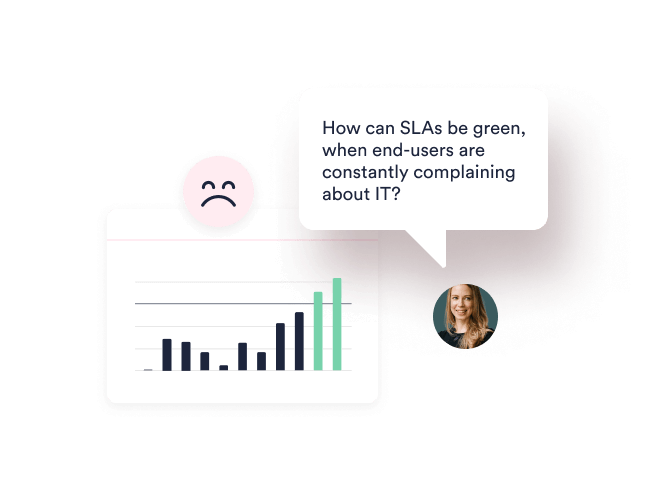
|
This combination is typical when a Watermelon Effect is present:
|
Exposing this mismatch can seem like a bad idea, but it is, in fact, a good thing. It allows IT teams to stop playing SLA games, focusing on vanity metrics. Transparency around the actual end user experience helps IT focus on helping your end-users. It fosters the feeling in IT teams that they're contributing to making their colleagues – enterprise IT end-users – happier and ultimately more productive.
If you're not familiar with the Watermelon Effect, learn more about it in our article: "The Watermelon Effect of SLAs on ITSM and IT Service Experience".
Our customers have been able to improve, on average, end-user happiness by 24% and productivity by 26%. Those improvements come from facing reality and focusing on providing services that make end-users happy.
"Experience Data gives us visibility into the Watermelon Effect."
- Nina Remes, Cargotec
Solving the Watermelon Effect starts with facing it
Your teams might be reluctant to begin continuous measurement of experience due to fear of what the data might reveal.Collaboration starts by agreeing on what the issues are
Service review meetings involve enough complexity as it is. HappySignals provides real-time experience data and intuitive drill-down analytics on the platform, giving a single shared view for all participants – so it is easier for everyone to agree on what to improve based on end-user needs.
One view of experience for all stakeholders
Exposing the watermelon makes your work easier with IT when you no longer have to rely on "experience data" when it measures devices or processes. HappySignals can become the one tool you can use with all stakeholders regardless of their position in the enterprise.
One metric that naturally leads to better performance
What gets measured gets done. Agents with a real-time experience feedback loop feel more motivated as they see how they serve people rather than SLAs. HappySignals data makes agents know the value of their work. The positives become much more visible, and factors uncover the real reasons end-users give feedback. Share success stories to people outside of IT through shared real-time reports or in-office HappySignals live screens.
Solving the Watermelon Effect starts with facing it
Your teams might be reluctant to begin continuous measurement of experience due to fear of what the data might reveal.Collaboration starts by agreeing on what the issues are
Service review meetings involve enough complexity as it is. HappySignals provides real-time experience data and intuitive drill-down analytics on the platform, giving a single shared view for all participants – so it is easier for everyone to agree on what to improve based on end-user needs.
One view of experience for all stakeholders
Exposing the watermelon makes your work easier with IT when you no longer have to rely on "experience data" when it measures devices or processes. HappySignals can become the one tool you can use with all stakeholders regardless of their position in the enterprise.
One metric that naturally leads to better performance
What gets measured gets done. Agents with a real-time experience feedback loop feel more motivated as they see how they serve people rather than SLAs. HappySignals data makes agents know the value of their work. The positives become much more visible, and factors uncover the real reasons end-users give feedback. Share success stories to people outside of IT through shared real-time reports or in-office HappySignals live screens.
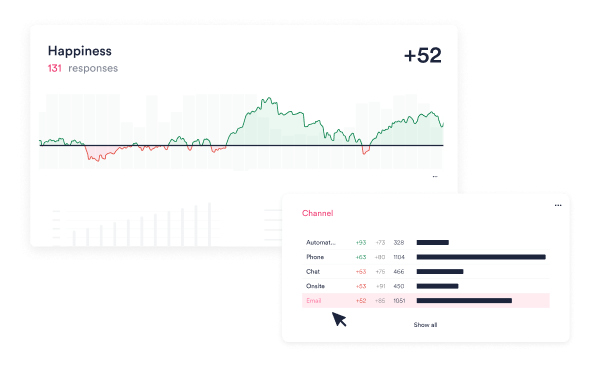
Understanding what causes the Watermelon Effect starts with continuous experience data measurement.
Not knowing which IT touch points end-users struggle with doesn't change their perception; it just makes you unaware and unable to do something about it.
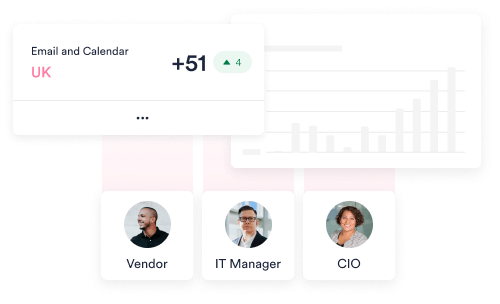
The worst mistake IT can make is to start measuring experience but not use the data.
Our research shows that organizations that regularly use HappySignals in stakeholder meetings are more likely to see rapid improvements in end-user experience.
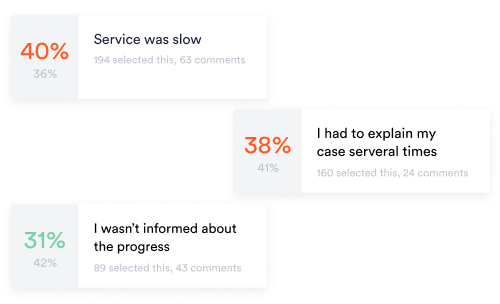
Our IT Experience Management Platform contains Factors from our Global IT Benchmark report, which show the most common reasons for good and bad experiences.
The Happiness Score data is combined with operational data from your IT service management (ITSM) tool, making it easy to identify and flag the root causes of bad experiences.
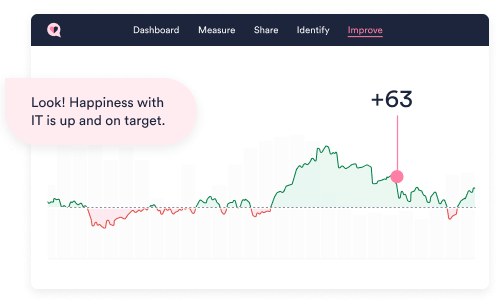
It’s gratifying to find improvement areas through experience data, take steps to fix the issues, and see happiness in different IT areas go up.
Fostering a culture that celebrates improvements to end user experience will motivate teams to be more human-centric in their efforts - thus fixing the watermelon effect one IT improvement at a time.
Discover more valuable content from our Learning Center
Read more about this topic from our blog
Does your SLAs look all green on the outside, but you still get the feeling they are not telling you the complete story of the state of your IT? Book a meeting to discuss how to fix the watermelon effect in your IT organization.
You'll learn:
Schedule a meeting with our CEO, Sami Kallio, to learn more about how to fix the watermelon effect.
